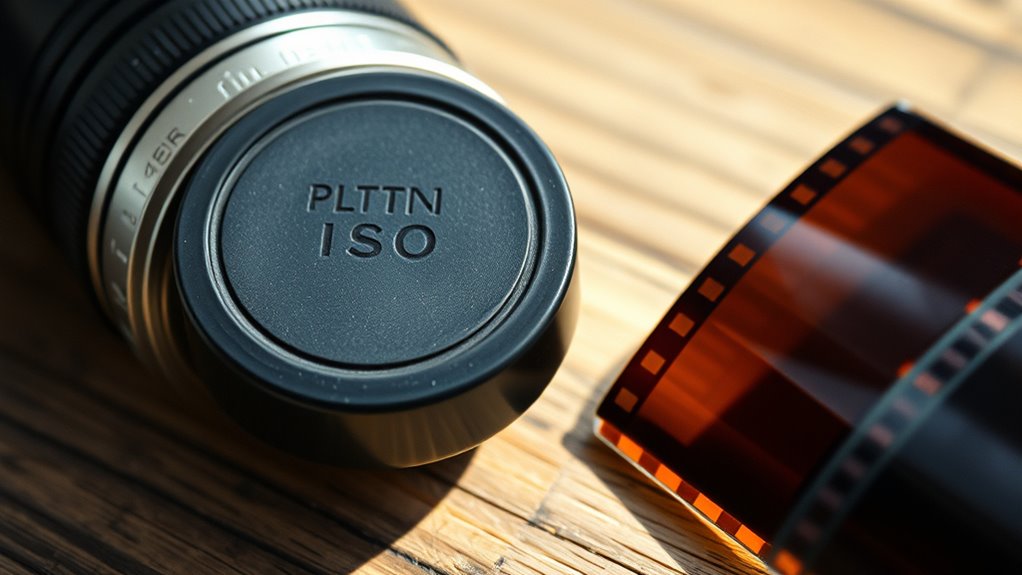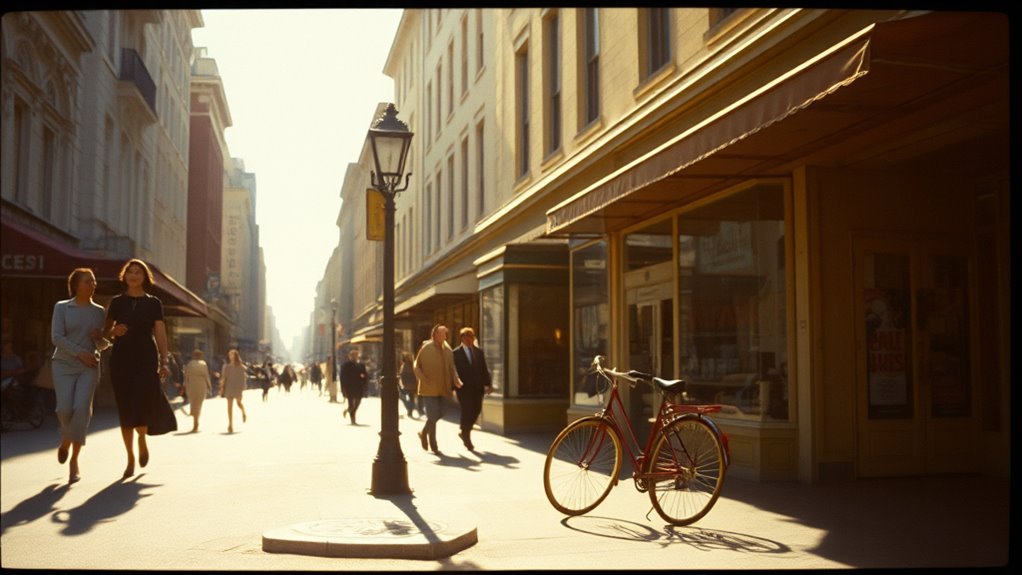In analog photography, you choose from film types like 35mm, medium, or large format, each offering different levels of detail and ease of use. Your ISO setting affects how sensitive the film is to light; lower ISO (100-200) provides finer grain and sharper images, while higher ISO (800-1600) is better for low light but with more grain. Understanding these options helps you capture the mood you want—explore further to master the art of film photography.
Key Takeaways
- Film formats include 35mm, medium format, and large format, each with distinct image quality and workflow impacts.
- 35mm film is compact and versatile, suitable for everyday photography with moderate resolution.
- Medium format offers larger negatives for higher resolution, ideal for portraits and fine art.
- Large format provides maximum detail but requires specialized equipment and is used for studio or landscape work.
- ISO indicates film sensitivity to light, with lower ISO for finer grain and higher ISO for low-light conditions.

Understanding film types and ISO in analog photography is essential for capturing the images you envision. When you’re choosing film, you’ll encounter various film formats, each offering unique characteristics that influence your final shot. These formats include 35mm, medium format, and large format, and each one impacts your workflow, image quality, and the level of detail you can achieve. For example, 35mm film is compact and versatile, making it ideal for everyday photography and quick shooting. Medium format, on the other hand, provides larger negatives, resulting in higher resolution and richer detail, perfect for portraits or fine art. Large format film offers even greater detail but requires specialized equipment and patience, suited for studio or landscape work where precision matters. Understanding the differences between these formats helps you select the right one for your project.
Alongside film formats, ISO measurement plays a significant role in how you approach your photography. ISO in film refers to the film’s sensitivity to light, which directly affects your exposure settings and the resulting image’s brightness and grain. Lower ISO films, such as ISO 100 or 200, are less sensitive to light, making them ideal for bright conditions like sunny days or well-lit interiors. These films tend to produce finer grain and sharper details, giving your images a smooth, clean look. Conversely, higher ISO films, such as ISO 800 or 1600, are more sensitive to light, allowing you to shoot in dimmer environments or at faster shutter speeds. However, higher ISO films often introduce more noticeable grain, which can add a textured, artistic quality to your photos but may also reduce overall sharpness. Developing your understanding of film sensitivity can help you better match your equipment to your creative goals and shooting conditions.
Choosing the right film format and ISO measurement depends on your shooting conditions and artistic goals. If you’re working outdoors on a sunny day, a lower ISO film in a compact 35mm format might be perfect, giving you crisp images without much grain. In low-light or indoor settings, a higher ISO film will help you capture scenes without a tripod or lengthy exposures, though you’ll need to accept the increased grain as part of the aesthetic. As you develop your skills, experimenting with different film formats and ISO ratings will deepen your understanding of how these elements influence your images. Remember, the key is to match your film choice with your environment and creative vision, so each shot accurately reflects what you want to express.
Frequently Asked Questions
How Do I Choose the Best Film Type for Portraits?
To choose the best film type for portraits, consider your desired look. If you want smooth skin tones, pick a film with fine film grain and moderate color saturation. For vibrant portraits, select a film with higher color saturation and slightly more noticeable grain. Match the film to your lighting conditions and style. Test different options to see which enhances your subject’s features best, ensuring your portraits turn out stunning.
Can I Mix Different ISO Films in One Roll?
You can’t mix different ISO films in one roll without risking a chaotic image. Each film stock has its own ISO compatibility, like a musical instrument tuned for a specific note. When you load a roll, it’s best to keep the ISO consistent, so your camera can properly expose every frame. Mixing ISO films can lead to uneven exposures, ruining the harmony of your photos. Stick to one ISO per roll for smooth results.
How Does Temperature Affect Film Development?
Temperature critically impacts film development because it affects film temperature, which in turn influences development consistency. When the temperature is too high, the chemicals develop the film faster, risking overexposure and loss of detail. Conversely, lower temperatures slow down the process, possibly causing underdevelopment. To guarantee consistent results, maintain a steady, recommended film temperature during development, and adjust timing if your temperature deviates from the ideal.
Are There Eco-Friendly Film Options Available?
Yes, eco-friendly film options are available. You can choose biodegradable films made from eco-friendly materials, which break down naturally without harming the environment. These films reduce plastic waste and minimize chemical usage during development. While they might be less common than traditional options, more brands are now offering sustainable alternatives, so you can enjoy your photography hobby while also caring for the planet.
What Are Common Mistakes When Selecting ISO for Outdoor Shooting?
When selecting ISO for outdoor shooting, you often make mistakes like choosing too high or too low, which can lead to unwanted film grain or underexposure. Always use light metering to determine the right ISO setting for your environment. If you pick too high, your images might be grainy; too low, and you’ll miss details in shadows. Proper light metering helps you balance ISO for clear, sharp photos.
Conclusion
Understanding film types and ISO in analog photography helps you choose the right film, master exposure, and achieve your desired look. It’s about knowing your options, knowing your settings, and knowing your creative goals. Whether you prefer the classic feel of black and white or the vibrant colors of slide film, your choices shape your images. Embrace the variety, explore the possibilities, and let your passion for film drive your photographic journey.










